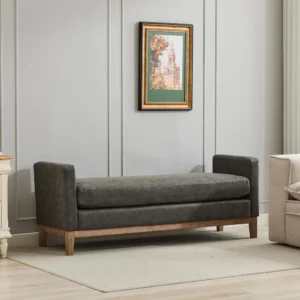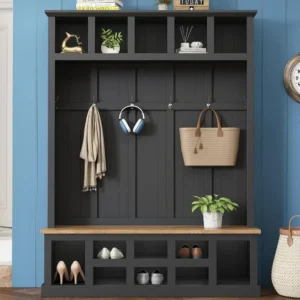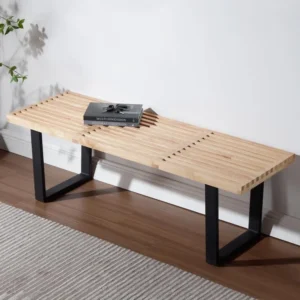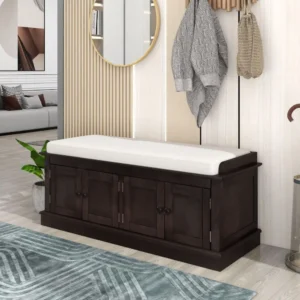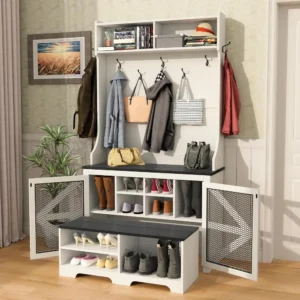Understanding the Importance of a Well-Designed Mudroom
A functional mudroom serves as the bridge between your outdoor adventures and your clean, organized home interior. This dedicated transition space acts as a buffer zone where family members can shed outdoor layers, remove dirty shoes, and store seasonal items before entering the main living areas of the home.
The primary purpose of a mudroom goes beyond simply providing storage – it’s about creating an organizational system that supports your family’s daily routines. Without this purposeful space, homes often struggle with scattered shoes by the door, misplaced keys, forgotten permission slips, and the constant battle against tracked-in dirt and debris. A well-designed mudroom contains this chaos while protecting the cleanliness of your home.
For busy households, the impact of a functional mudroom is significant. The average family enters and exits their home multiple times daily, creating numerous opportunities for clutter and dirt to accumulate. With proper planning, your mudroom becomes command central for smooth transitions—whether you’re rushing out to work and school in the morning or returning from sports practice in the afternoon.
By investing time in designing a thoughtful mudroom, you’re not just creating storage—you’re establishing a system that enhances your home’s functionality while reflecting your what is a mudroom in a house needs and personal style. This foundation sets the stage for a more organized, stress-free home environment.
Assessing Your Household’s Specific Needs
Before planning your mudroom design, take time to evaluate who will be using this space and how. Consider:
- Family demographics: Adults, children, elderly family members, and pets all have different storage and access needs
- Item inventory: What typically comes through your door? Sports equipment, school supplies, work bags, pet supplies, or outdoor gear?
- Seasonal considerations: How will your storage needs change between winter coats and summer beach gear?
- Special activities: Do family hobbies like gardening, fishing, or hiking require specific storage solutions?
To truly understand your mudroom needs, try tracking your household’s entry/exit patterns for a full week. Note which items are brought in and out most frequently, where bottlenecks occur during busy mornings, and which current storage solutions are working (or failing). This practical assessment helps prioritize your most important mudroom features and prevent wasted space on unused storage types.
Selecting the Optimal Location for Your Mudroom
The ideal mudroom location connects directly to your most frequently used entrance while providing enough space for your storage needs. Common locations include:
- Side or back door entry: Often preferred as it offers privacy while still providing convenient access
- Garage-to-house transition: Creates a natural stopping point before entering living spaces
- Front entryway: Works well for homes where the front door is the primary entrance
- Laundry room combination: Maximizes utility in homes with space constraints
When evaluating potential locations, consider:
- Existing traffic patterns in your home
- Proximity to parking areas or driveways
- Available square footage and expansion possibilities
- Plumbing access if you plan to include a sink or washing station
- Natural light sources and ventilation options
For homes with limited space, creative solutions like planning perfect tiny mudroom designs can help maximize even the smallest areas. The key is selecting a location that naturally aligns with how your family already moves through your home, rather than forcing new habits.
Space Planning and Layout Design
Creating an effective mudroom layout begins with understanding traffic flow and spatial requirements. The best mudrooms allow for comfortable movement while providing dedicated zones for different activities.
Common mudroom layouts include:
- Single-wall design: All storage elements line one wall, ideal for narrow spaces
- Galley layout: Storage on opposing walls creating a corridor, perfect for pass-through areas
- L-shaped configuration: Maximizes corner spaces while creating distinct functional zones
- U-shaped design: Offers maximum storage capacity for larger families or extensive gear
For comfortable use, aim for:
* Minimum width of 5 feet (1.5 m) for main walkways
* At least 3 feet (0.9 m) of clearance in front of storage elements
* Seating height of 16-18 inches (40-45 cm) for comfortable shoe removal
* Hook installation at 48-60 inches (122-152 cm) for adults and 30-40 inches (76-102 cm) for children
For challenging spaces, consider:
* Staggered hooks to maximize vertical storage
* Slim profile benches or flip-down seating
* Utilizing corners with specialized storage solutions
* Multi-functional pieces that combine several needs in one footprint
The layout should accommodate your household’s peak usage times—can multiple people use the space simultaneously during morning rushes? Our collection of mudroom benches offers various configurations to match different layout requirements and spatial constraints.
Selecting Durable and Practical Flooring
Mudroom flooring faces unique challenges: wet boots, muddy paws, road salt in winter, and sand in summer. Your flooring choice must withstand these elements while remaining easy to clean and visually appealing.
| Flooring Type | Durability | Water Resistance | Maintenance | Cost |
|---|---|---|---|---|
| Porcelain Tile | Excellent | Excellent | Low | Medium-High |
| Luxury Vinyl | Very Good | Excellent | Low | Low-Medium |
| Natural Stone | Excellent | Good-Excellent | Medium | High |
| Sealed Concrete | Excellent | Very Good | Low | Low-Medium |
Porcelain tile remains a top choice for mudrooms due to its exceptional durability and water resistance. Look for textured or matte finishes that provide slip resistance when wet. Darker grout lines or patterned tiles help camouflage dirt between cleanings.
Luxury vinyl plank (LVP) or tile offers an excellent balance of durability, water resistance, and comfort underfoot, often at a lower price point than natural materials. Modern LVP can convincingly mimic wood or stone while providing superior moisture protection.
For regions with harsh winters, consider installing radiant floor heating beneath your mudroom flooring. This not only provides comfort during cold months but helps wet footwear dry more quickly, reducing moisture problems.
When selecting patterns, choose designs that hide dirt but aren’t so busy they make the space feel smaller. Install proper transitions between your mudroom flooring and adjacent rooms to manage height differences and create visual boundaries.
Essential Storage Solutions for Organization
Effective mudroom storage combines accessibility with capacity while keeping items organized by family member and function. The best systems prevent the “dump zone” effect where everything piles up haphazardly.
Built-in vs. Freestanding Storage
Built-in cabinetry offers a custom look and maximizes every inch of available space but requires a larger initial investment. Freestanding units provide flexibility to rearrange as needs change and can move with you to a new home. Many homeowners opt for a hybrid approach, combining built-in benches with movable upper storage components.
Personalized Storage Zones
Creating individual storage “lockers” or cubbies for each family member establishes clear ownership and accountability. These personalized zones typically include:
- Upper cabinets or shelves for seasonal or less-used items
- Hooks for daily outerwear at appropriate heights
- Bench area with shoe storage below
- Baskets or bins for small accessories like gloves and scarves
For maximum organization, mudroom bench cubbies provide dedicated spaces for each family member while maintaining a cohesive look throughout the space.
Vertical Storage Strategies
Maximize your mudroom’s capacity by utilizing the full wall height:
- Install hooks at appropriate heights for different users (48-60 inches for adults, 30-40 inches for children)
- Use adjustable shelving systems that can adapt as needs change
- Incorporate overhead cabinets or shelves for seasonal or rarely-used items
- Consider vertical shoe racks that minimize floor space requirements
Specialized Storage Solutions
Address specific storage challenges with:
- Boot trays with drainage or raised grids to allow wet footwear to dry
- Baskets with liners for wet gloves or hats
- Pull-out drawers for pet supplies or sports equipment
- Hidden storage inside bench seating for bulkier items
- Mail sorters and key hooks near the entry point
The most successful storage systems remain flexible enough to adapt to seasonal changes while keeping daily essentials easily accessible.
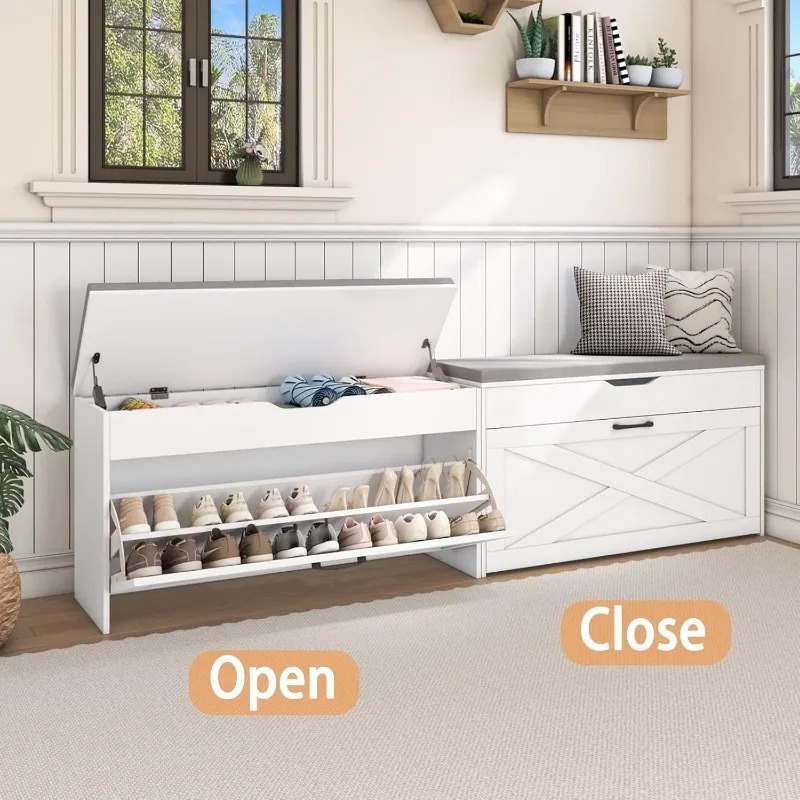
Integrating Comfortable and Functional Seating
A properly designed seating area transforms your mudroom from a mere storage space to a practical transition zone. Seating serves the essential function of providing a comfortable place to put on and remove footwear, particularly important for children and older adults.
The ideal mudroom bench combines comfort with practicality:
* Height of 16-18 inches (40-45 cm) for proper ergonomics
* Depth of 15-20 inches (38-50 cm) to provide adequate seating space
* Sturdy construction to support multiple users
* Easy-to-clean surfaces that resist moisture and dirt
Functional mudroom seating solutions often incorporate storage within the bench itself, maximizing space efficiency. Options include:
- Flip-top storage benches that conceal seasonal items
- Open cubbies beneath the seating surface for frequent-use shoes
- Pull-out drawers for smaller accessories
- Divided compartments to separate wet and dry items
Material selection for bench seating should balance comfort with durability. Performance fabrics with stain resistance work well for cushioned options, while solid wood or laminate surfaces offer maximum durability for heavy use areas. Consider mastering mudroom best bench styles to find the perfect balance between form and function for your specific household needs.
For smaller mudrooms, look for slim-profile benches, wall-mounted flip-down seating, or stools that can be tucked away when not in use. Even the most compact spaces benefit from some form of seating to facilitate the transition between outdoors and indoors.
Wall Treatments and Surface Solutions
Mudroom walls require special consideration as they endure splashes, bumps, scuffs, and daily wear. The right wall treatments balance durability with style while complementing your overall design scheme.
Durable wall options include:
- Beadboard or wainscoting: Provides classic appeal with better scuff resistance than plain drywall
- Shiplap: Offers a farmhouse aesthetic while hiding imperfections over time
- Tile wainscoting: Creates a waterproof lower wall surface that’s easy to wipe clean
- Semi-gloss or satin paint: Allows for regular cleaning without damaging the finish
For areas directly behind hooks or benches, consider extra-durable materials like:
* Fiber cement board with protective paint
* Laminate panels that resist scratches
* Metal sheets for a modern industrial look or magnetic functionality
* Washable wallpaper with protective coating for design flexibility
Any horizontal surfaces in your mudroom should prioritize durability and water resistance. For countertops or work surfaces, consider:
- Quartz composites that resist staining and scratching
- Solid surface materials for a seamless look
- Laminate for budget-friendly durability
- Butcher block with marine-grade sealer for warm, natural appeal
The key is selecting materials that can withstand your specific mudroom challenges—whether that’s children’s art supplies, gardening tools, pet accessories, or sports equipment—while maintaining an aesthetic that flows with adjacent rooms.
Creating Effective Lighting for Functionality and Ambiance
Proper mudroom lighting serves both practical and aesthetic purposes. Since this transition space often lacks natural light, thoughtful lighting design becomes especially important.
A layered lighting approach works best:
- Ambient lighting: Provides overall illumination, typically from ceiling fixtures
- Task lighting: Focuses brightness on specific areas like hooks, shelves, or seating
- Accent lighting: Adds visual interest and highlights architectural or decorative elements
For ceiling fixtures, consider:
* Flush-mount or semi-flush fixtures that don’t take up vertical space
* Recessed can lights for clean, unobtrusive illumination
* Track lighting that can be adjusted to target specific areas
Task lighting improves functionality through:
* Under-shelf lighting to illuminate stored items
* Wall sconces beside mirrors for better visibility
* Motion-activated lighting for convenience when hands are full
When selecting fixtures, choose styles that complement your home’s overall aesthetic while providing adequate brightness. For spaces that serve as main entries, slightly more decorative fixtures create a welcoming first impression.
If your mudroom has windows, maximize natural light while maintaining privacy through:
* Frosted or textured glass that obscures views while allowing light
* Top-down bottom-up shades that protect privacy at eye level
* Light-filtering curtains that soften harsh sunlight
Energy-efficient LED options reduce electricity costs while providing bright, clean light in frequently-used spaces like mudrooms.
Designing for Style While Maintaining Functionality
A well-designed mudroom strikes the perfect balance between practical functionality and aesthetic appeal. Rather than treating this space as purely utilitarian, consider it an extension of your home’s overall design language.
Popular mudroom style approaches include:
- Modern: Clean lines, minimal hardware, neutral colors with bold accents
- Traditional: Classic profiles, warm wood tones, heritage-inspired details
- Farmhouse: Shiplap walls, vintage accessories, weathered finishes
- Transitional: Blending traditional shapes with contemporary simplicity
- Coastal: Light colors, natural textures, blue accents
Your mudroom’s color palette sets the tone for the entire space. Consider:
- Light colors for small spaces to create the illusion of more room
- Medium tones that camouflage dirt while maintaining brightness
- Bold accent colors for doors, benches, or accessory items
- Contrasting colors to define different functional zones
Hardware and fixtures become the “jewelry” of your mudroom design:
* Hooks in finishes that complement your home’s existing hardware
* Cabinet pulls that balance form and function
* Light fixtures that make a design statement while providing proper illumination
For a cohesive look, select farmhouse mudroom bench pieces or other style-specific components that align with your overall aesthetic vision while delivering the organizational features your household needs.
Remember that even the most beautiful mudroom must function effectively. Prioritize durability and practicality in all material selections, then layer in decorative elements that personalize the space without impeding its core purpose.

Specialized Solutions for Common Mudroom Challenges
Even the most thoughtfully designed mudrooms face specific organizational challenges. Addressing these common issues with targeted solutions keeps your mudroom functioning optimally year-round.
Managing Wet Items
Moisture control represents one of the biggest mudroom challenges:
- Install boot trays with drainage systems or raised grids to allow wet footwear to dry
- Include umbrella stands with water-catching bases to contain drips
- Create a designated drying area with waterproof surfaces and adequate airflow
- Use mesh or wire baskets for wet gloves and hats that promote air circulation
- Consider a wall-mounted drying rack for wet coats that folds away when not needed
Seasonal Item Management
As seasons change, so do your storage needs:
* Implement a rotation system for seasonal gear, keeping current items accessible
* Use labeled bins on high shelves for off-season storage
* Create adjustable systems that accommodate bulky winter coats and light summer jackets
* Maintain a small “transitional weather” section for unpredictable seasons
Pet-Friendly Features
For households with four-legged family members:
* Install a dedicated pet washing station with hand shower if space allows
* Create specific storage for leashes, toys, and pet accessories
* Include washable mats under food and water stations
* Design a comfortable pet bed nook away from main traffic areas
* Store pet food in sealed containers that prevent odors and pests
Sports Equipment Organization
Active families benefit from specialized sports storage:
* Vertical racks for bats, sticks, and racquets
* Ventilated baskets for balls and small equipment
* Wall-mounted systems for bikes and larger gear
* Labeled bins for sport-specific items like shin guards or cleats
For families with children, mudroom bench shoe storage solutions help manage the constant flow of footwear from school, sports, and everyday activities while keeping pairs together and easily accessible.
Entryway Bench with Cushion, Mudroom Bench with Cushion, Shoe Bench for Entryway
$1,186.63 Select options This product has multiple variants. The options may be chosen on the product pageBench with Hooks and Storage, Entryway Hall Tree, Mudroom Bench with Cubbies, Mudroom Bench with Shoe Storage
$818.38 Select options This product has multiple variants. The options may be chosen on the product pageModern Entryway Bench, Wood Entryway Bench, Wood Mudroom Bench
$497.69 Select options This product has multiple variants. The options may be chosen on the product pageEntryway Coat Rack Bench, Entryway Hall Tree, Farmhouse Mudroom Bench, Mudroom Bench with Shoe Storage
$805.09 Select options This product has multiple variants. The options may be chosen on the product pageEntryway Bench with Cushion, Mudroom Bench with Cabinets, Shoe Bench for Entryway, Shoe Bench with Cushion
$991.71 Select options This product has multiple variants. The options may be chosen on the product pageBench with Hooks and Storage, Entryway Coat Rack Bench, Entryway Hall Tree, Mudroom Bench with Shoe Storage, Mudroom Coat Rack Bench
$793.73 Select options This product has multiple variants. The options may be chosen on the product page
Building a Practical Drop Zone and Command Center
Beyond managing outerwear and footwear, modern mudrooms often serve as household command centers—places where daily life is organized and essential items are kept ready for grab-and-go access.
An effective drop zone includes:
- Dedicated mail sorting area with separate sections for action items, bills, and recycling
- Key hooks or small drawers positioned near the door for quick access
- Charging station for family devices with cord management
- Small tray or bowl for pocket items like coins and sunglasses
- Wall-mounted or desk calendar for family schedule visibility
For households with children, consider:
* Lower hooks or cubbies for backpacks at kid-friendly heights
* Clear containers for permission slips and school communications
* Designated homework supply storage
* Visual reminder systems for morning and after-school routines
Communication center elements might include:
* Small whiteboard or chalkboard for family messages
* Bulletin board for important papers and reminders
* File folders for take-out menus, schedules, and reference items
* Shared family calendar with color coding for different members
When designing these elements, prioritize systems that can be maintained with minimal effort. The simpler the organization system, the more likely family members will consistently use it, preventing the mudroom from becoming a catch-all clutter zone.
Solutions for Small and Challenging Spaces
Limited space doesn’t mean you must sacrifice mudroom functionality. Strategic planning can create effective transition areas even in compact homes.
For narrow spaces:
* Install a slim wall-mounted bench with hooks above and shoe storage below
* Choose depth-restricted cabinets designed specifically for tight areas
* Use corner spaces effectively with L-shaped configurations
* Install floating elements that maintain open floor space underneath
For awkward areas:
* Convert under-stair spaces into functional storage zones
* Transform shallow closets into mini-mudrooms with strategic organization
* Use room dividers to carve out transition zones in open floor plans
* Install pocket doors to separate mudroom areas without requiring door clearance
Maximize vertical space by:
* Installing hooks and storage at multiple heights
* Using the full wall height with upper cabinets or shelving
* Selecting tall, narrow storage units rather than wide, short ones
* Incorporating overhead storage for seasonal items
Visual tricks can make small mudrooms feel more spacious:
* Use light colors on walls and cabinetry
* Install mirrors to create the illusion of depth
* Choose consistent materials to create visual flow
* Incorporate adequate lighting to eliminate shadows
For the ultimate space-saving solution, multi-functional mudroom benches ultimate guide offers insights into pieces that serve multiple purposes while maintaining a compact footprint.

Implementation: DIY vs. Professional Installation
When bringing your mudroom design to life, determining which elements to tackle yourself versus hiring professionals can impact both your budget and the final results.
DIY-friendly mudroom projects typically include:
* Installing basic shelving and hook systems
* Assembling and installing freestanding storage units
* Basic painting and decorating
* Installing simple flooring like luxury vinyl planks with click-lock systems
* Mounting basic lighting fixtures where wiring already exists
Projects that often benefit from professional expertise:
* Custom built-in cabinetry and specialized storage
* New electrical wiring for additional outlets or lighting
* Plumbing installation for sinks or pet washing stations
* Structural changes to create or expand the mudroom space
* Complex flooring installation, especially tile work
When comparing DIY versus professional routes:
* DIY typically offers significant cost savings but requires time investment
* Professional installation ensures proper execution but at higher expense
* Hybrid approaches often work well, with professionals handling specialized work while homeowners manage finishing touches
For budget-conscious implementations, consider a phased approach:
* Start with essential storage and seating
* Add specialized features as budget allows
* Upgrade materials over time while maintaining the same layout
* Begin with ready-made solutions that can be replaced with custom elements later
The best approach balances your skill level, available time, budget constraints, and the complexity of your desired mudroom design.
Can a Mudroom Add Value to Your Home?
A thoughtfully designed mudroom often represents a valuable addition to your home from both practical and financial perspectives.
Real estate professionals consistently cite organized entryway storage as a desirable feature for potential buyers, particularly in regions with distinct seasons or among families with children. A well-executed mudroom addresses common pain points for homeowners while showcasing a home’s organizational potential.
Features that add the most value include:
* Built-in storage solutions with premium materials
* Durable flooring that promises long-term performance
* Thoughtful lighting that enhances functionality
* Multi-purpose spaces that serve several household needs
The return on investment tends to be strongest when:
* The mudroom design complements the home’s overall aesthetic
* The space feels purposeful rather than like an afterthought
* The organization systems are intuitive and adaptable
* Materials and construction quality match or exceed those in the rest of the home
For homes lacking dedicated transition spaces, adding even a modest entryway hall tree or storage system can significantly improve functionality while creating a positive impression for potential buyers.
While highly personalized features might perfectly suit your family’s needs, consider how specialized elements might be perceived by future buyers if resale value is a priority.
Frequently Asked Questions About Mudroom Design
How much space is really needed for a functional mudroom?
While larger mudrooms offer more options, even a 3-foot by 5-foot (0.9 m by 1.5 m) space can function effectively with proper planning. Prioritize your most essential needs and use vertical space efficiently. For extremely limited areas, focus on a compact “drop zone” with hooks, a small bench, and shoe storage.
What’s the most durable flooring for high-traffic mudrooms?
Porcelain tile remains the gold standard for mudroom flooring due to its exceptional durability, water resistance, and variety of style options. For a more budget-friendly alternative with excellent performance, luxury vinyl plank offers impressive durability with simpler installation requirements.
How can I design a mudroom that works for all seasons?
Incorporate flexible storage systems that can be reconfigured as seasonal needs change. Include both open and closed storage, with closed cabinets for off-season items. Design with your most storage-intensive season in mind (typically winter in cold climates) while incorporating adjustable elements like movable hooks and flexible shelving.
Should my mudroom have a door to close it off from the rest of the house?
This depends on your home’s layout and personal preference. A door can help contain noise, odors, and visual clutter, particularly important if your mudroom is visible from main living areas. However, doorless designs create better flow and can make the space feel more integrated with the home. If noise or visual separation is important but space is limited, consider pocket doors or barn doors that don’t require swing clearance.
What are the best storage solutions for kids’ stuff?
The most successful storage systems for children incorporate age-appropriate accessibility, clear organization, and visual simplicity. Lower hooks, open cubbies with labels, and designing efficient mudroom seating with built-in storage help children develop independence while maintaining organization.
Maintaining Your Mudroom’s Organization and Appearance
Even the best-designed mudroom requires consistent maintenance to remain functional and attractive. Establishing simple routines helps preserve your mudroom’s effectiveness and protect your investment.
Daily maintenance:
* Hang coats and bags immediately upon entering
* Place shoes in designated areas rather than on the floor
* Empty pockets before storing items to prevent clutter accumulation
* Wipe down surfaces that have accumulated moisture or dirt
Weekly organization:
* Return items that belong elsewhere in the home
* Check for and manage any paper accumulation
* Wipe down heavily used surfaces and handles
* Sweep or vacuum flooring to prevent debris buildup
Seasonal refresh:
* Rotate seasonal clothing and gear at appropriate intervals
* Clean inside storage compartments before switching seasonal items
* Evaluate what’s working and what needs adjustment in your system
* Purge outgrown or unused items before they consume valuable space
For maximum success, involve the entire household in maintaining the mudroom. Creating simple systems that everyone understands increases compliance and prevents any single family member from bearing the full organizational burden. Consider creating visual guides for children or household helpers to establish clear expectations.
By combining thoughtful design with consistent maintenance, your mudroom will continue serving as the functional transition space that keeps the rest of your home organized, clean, and clutter-free for years to come.


